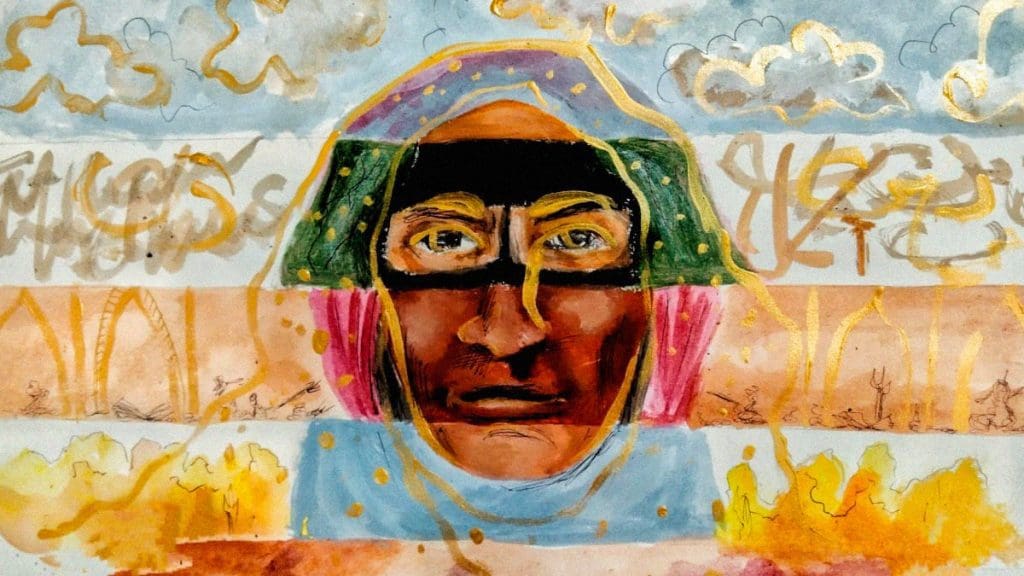
On the last week of December, eight young Muslim students in Government Pre-University College in Udupi district of Karnataka had barred from entering the classroom wearing Hijab has brewed much controversy. Even using Urdu, Beary, and Arabic languages, which Muslims commonly use in Karnataka, are restrained by the institution. Later the students were forced to write an apology letter when the issue became a topic of discussion in public. An expert committee set up recently by the Karnataka government to resolve the issue has adhered students to attend online classes until the committee decides.
Despite no mandatory uniform for the government college students, the institution forced Mulsim students to abandon their value system and religious belief to be accommodated.
Meanwhile, recently, Riza Nahan, a student of eighth std GHSS Kuttiyadi in Kozhikode district, has approached Kerala High court following a restraining order from wearing Hijab and full sleeve shirt in Student Police Cadet. The home department ruled out that no hijab will be allowed with an SPC uniform. Adding that ‘religious symbols will interfere with the secular nature of the police’.
While in Udupi, Muslim students are forced to choose between Hijab and education, Kerala High Court had stated that there is no compulsion to join in SPC, and if the petitioner is not ready to follow the uniform code, must not join. As a desperate response to the ascendance of Anti-Muslim Hindutva nationalist ideology, young Muslim students are forced to accommodate into the latter (education, SPC) by compromising the former — Hijab.
Accommodation or Assimilation?
Taking these two incidents, needless to say, it is a fact that the integration of a Muslim body in India is only possible by negation of one’s self. The repeated incidents of vandalizing the masjids, political scapegoating of Muslims, and the acceptance of anti-Muslim sentiment in the major media outlets have heightened public anxieties over ‘Secular necessity’ and ‘religious threat,’ whereby the Muslims are forced to choose between the dichotomous characterizations.
In order to confront the ‘threat,’ they fiercely foster this dichotomy. Reacting to the institution’s claim of ‘secular necessity,’ either the process of assimilation or extermination is the choice for Muslims. However, anything which asserts ‘Muslimness’ is ‘excessive’, deemed harmful and unassimilable with the Indian National identity.
Furthermore, they penetrate that ‘Islamic fanaticism is taking hold of ‘our’ institutions and society,’ which have been the propaganda of the right-wing to build a Hindu Rashtra and ultimately to eradicate Muslims from India.
In the case of Muslims in India, the government’s systematic and institutionalized collective effort is to either cleanse out the Muslims from the mainstream or renounce our values and assimilate to Hindu dominant values. This early disregard of Islam and Muslimness is deeply rooted in the fact that the existing hegemonic ideology does not recognise the existence of Muslim bodies. And notably, recognition is the opposite of assimilation, where assimilation results from inherent Islamophobia.
Subsequently, these incidents set the stage for Muslims to forcefully forfeit their Muslimness or don Hijab to preserve education and all other corresponding benefits. Muslims who wish to be accommodated in a modern nation-state is forced to abide by the persisting dominant ideology.
For Muslims, the feeling of belongingness is a far-reaching notion.
Gendered Islamophobia: From Subjugation to threat
Constant raising and questioning Islamophobia had rendered troublesome to those who have pledged to liberate Muslim women.
For decades, Muslim women have been perceived as individuals incapable of developing their own consciousness and politics. They are viewed as powerless and oppressed. The shift in the meaning of Hijab from Subjugation to threat began with the Muslim women narratives getting acceptance.
Muslim women challenging the unrecognition and atrocities against the Muslim community had certainly fussed them up. Their outcry to ‘save’ Muslim women from the ‘Islamic repression’ and being our ‘mouthpiece’ is, on the one hand, more of their sensitivity to majoritarian Hindutva cultural ideology, which they have to thrust upon us. Consequently, ostracise Islam by subjugating and vilifying the ‘other.’
On the contrary, while Muslimness is disgraceful to secularism in the educational ‘shrines’ and or forced to abandon Hijab for the integration/accommodation, the token inclusive efforts and the token representations of Muslim women are extended by the mainstream ‘liberal democratic’ parties to showcase their secularism.
Worse, palpable discrimination (Hijab) against Muslim women, which is an act of denying Muslim women’s rights, is now accepted as legitimate. Otherwise, discriminatory acts threatening secularism; are perceived as the ‘real’ threat.
In a whole situation where Muslim students are forced to renounce the symbol of ‘otherness’ to preserve public ‘peace,’ despite proving the fidelity to the notion of ‘secularism’, these young Muslim students claim Islamophobia in denying Muslim Women’s rights is a Hope.
One must belong and feel one belongs.
Reference:
1. Mahmood, S. (2009). Religious Reason and Secular Affect: An Incommensurable Divide? Critical Inquiry, 35(4), 836-862.



